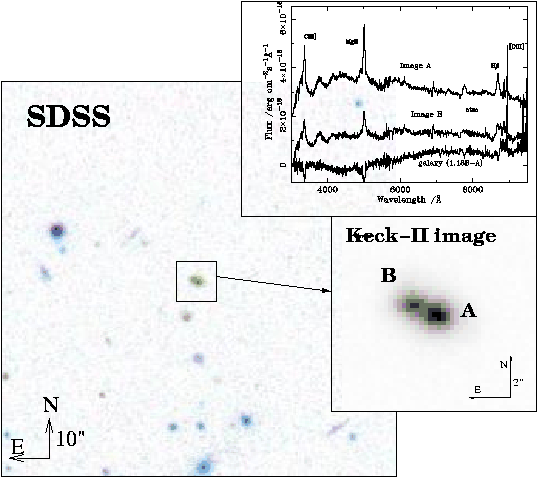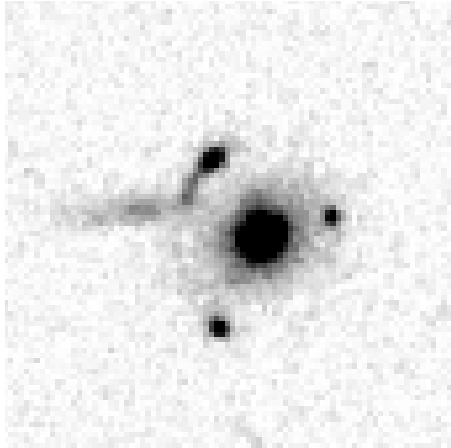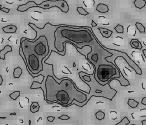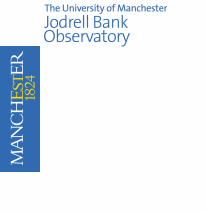- New lens surveys
- The MUSCLES survey
- The COCLES survey
- Surveys with LOFAR
New lens surveys

The new lens ULAS J234311-005034 discovered in the MUSCLES survey. An image taken with the Keck-II telescope clearly shows a double source, and spectroscopy (top) shows the two objects to have similar spectra, as expected for multiple images gravitationally lensed from the same source.

One of the new lenses found in the COSMOS survey

Simulation of a LOFAR observations of a faint star-forming galaxy at high redshift, lensed by a nearby elliptical galaxy.
The MUSCLES survey
Many existing surveys have been based on the SLOAN Digital Sky Survey. This is a large-area sky survey containing millions of objects, among them gravitational lenses. Previous work has turned up of the order of 30 lensed quasars from this survey. One obstacle to finding more is that the seeing of the SDSS survey is of the same order as the separation of many lensed systems, so lenses are often difficult to recognise. Successful ways around this have included using colours of objects to pick out those most likely to be quasars lensed by galaxies.
One way around this is to combine SDSS data with the new UKIDSS survey being conducted with the UK Infrared Telescope on Mauna Kea. This covers an area comparable to SDSS, but in the infrared and with generally better seeing. We have selected candidates using both these surveys together and begun a new programme (Massive UKIDSS-SDSS Cosmic Lens Survey, or MUSCLES) in collaboration with Eran Ofek (Caltech) and Masamune Oguri (Stanford) to discover more lensed quasars in this way. The first success, ULAS J234311.93-005034.0, has been published and we are looking for more; the aim is to at least double the known number of SDSS quasar lenses. We have currently submitted proposals to ESO and the WHT to study a list of 130 candidates.
The COCLES survey
The COSMOS Complete Lens Eyeball Survey (COCLES, Jackson 2008) has been performed by manual examination of all 285000 images of galaxies brighter than I=25 in the public COSMOS field, observed with HST by Scoville et al. (2007). Two certain and one highly probable new lenses are found, together with a list of over a hundred candidates. This follows earlier work by Faure et al. (2008) who studied a small subset of the COSMOS survey containing the most likely candidates. Although eyeball searches of this kind are relatively quick, and probably find most of the "obvious" gravitational lenses, the completeness for more subtle indications of lensing, such as single-arc systems, is likely to be lower.
Future surveys with LOFAR
The Low Frequency Array, or LOFAR, is currently being built. The core of this array is a system of 40-50 fields of receivers in the Netherlands, with maximum baselines of about 50km. It is also planned to build LOFAR stations in other European countries such as Germany and the UK. The overall instrument will be a very sensitive radio interferometer operating in the frequency range 30-200MHz. Part of the purpose of LOFAR is to do wide-area sky surveys which will find tens or hundreds of radio sources.
Among these sources will be large numbers of gravitational lenses. In collaboration with Olaf Wucknitz at the Argelander Institut fur Astronomie, we are conducting simulations to test the possibilities for finding large number of lenses with LOFAR. Because LOFAR is very sensitive, many of the radio sources it sees will be star-forming galaxies at moderate redshift, rather than the "classical" active galaxies and quasars that we see at higher flux levels. These star-forming galaxies are extended, and produce lens systems with arcs and rings, ideal for studying the mass distributions in the lensing galaxies.
